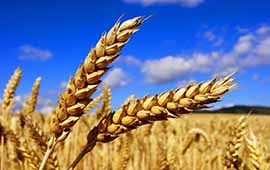Wheat is one of the main crops for consumption in Europe.
It is wheat that forms the basis of human nutrition – bread is made from it, as well as other important products that people around the world are willing to consume. In addition, wheat is the basis of the diet of animals, because it is feed wheat that is added to the feed for birds and other animals kept in industrial farms. At the same time, in most European countries, the conditions for growing this crop do not develop, and therefore they are forced to import this crop from other countries.
What factors affect wheat yield
What does it take to boast a good wheat yield? For this, several environmental factors must develop: the soil of the correct composition, high-quality fertilizers and good climatic conditions in the area where this crop is grown. Not all EU countries have a favorable environment for growing wheat, which is why supplies from other countries such as Ukraine, Russia and Kazakhstan are a priority for Europe. These features determined the situation that developed in the European market at the end of 2019 – thanks to uninterrupted grain supplies, Europe was provided with an adequate supply of harvest, while demonstrating good, but still insufficient, its own indicators of wheat yield. By the way, in terms of sown area for wheat, the EU countries are in third place in the world – in Europe this crop is grown on 26 million hectares. The first two places are occupied by India (30 million hectares) and Russia (27 million hectares).
However, the yield of this crop, especially in 2020, was influenced not only by climatic conditions.
Wheat yield in 2020
Despite the drought that began around the world, as well as the coronavirus pandemic, the situation with wheat yields remained at a record level, at least in the countries that are the granaries of this crop – Ukraine, Russia and Kazakhstan. At the same time, due to the pandemic, the EU countries introduced restrictions on the export of their own crops in order to preserve grain in the domestic market. The situation with the coronavirus as a whole negatively affected grain yields in Europe itself – FAO predicted that the volume of wheat production in the EU in 2020 will not only be lower than the previous year, but generally lower than the average over the past five years. At the end of 2020, less harvest of this crop was actually grown in Europe. So, in France, 33 million tons were collected. (against 39.5 million tons in 2019), in Germany – 21.8 million tons (against 22.4 million tons), and only in Poland the figures remained unchanged – 11.1 million tons. In general, the wheat yield in the EU decreased by 7%, and therefore European countries began to actively purchase this crop in other countries, which, due to the coronavirus pandemic, did not increase the price of wheat for export.






